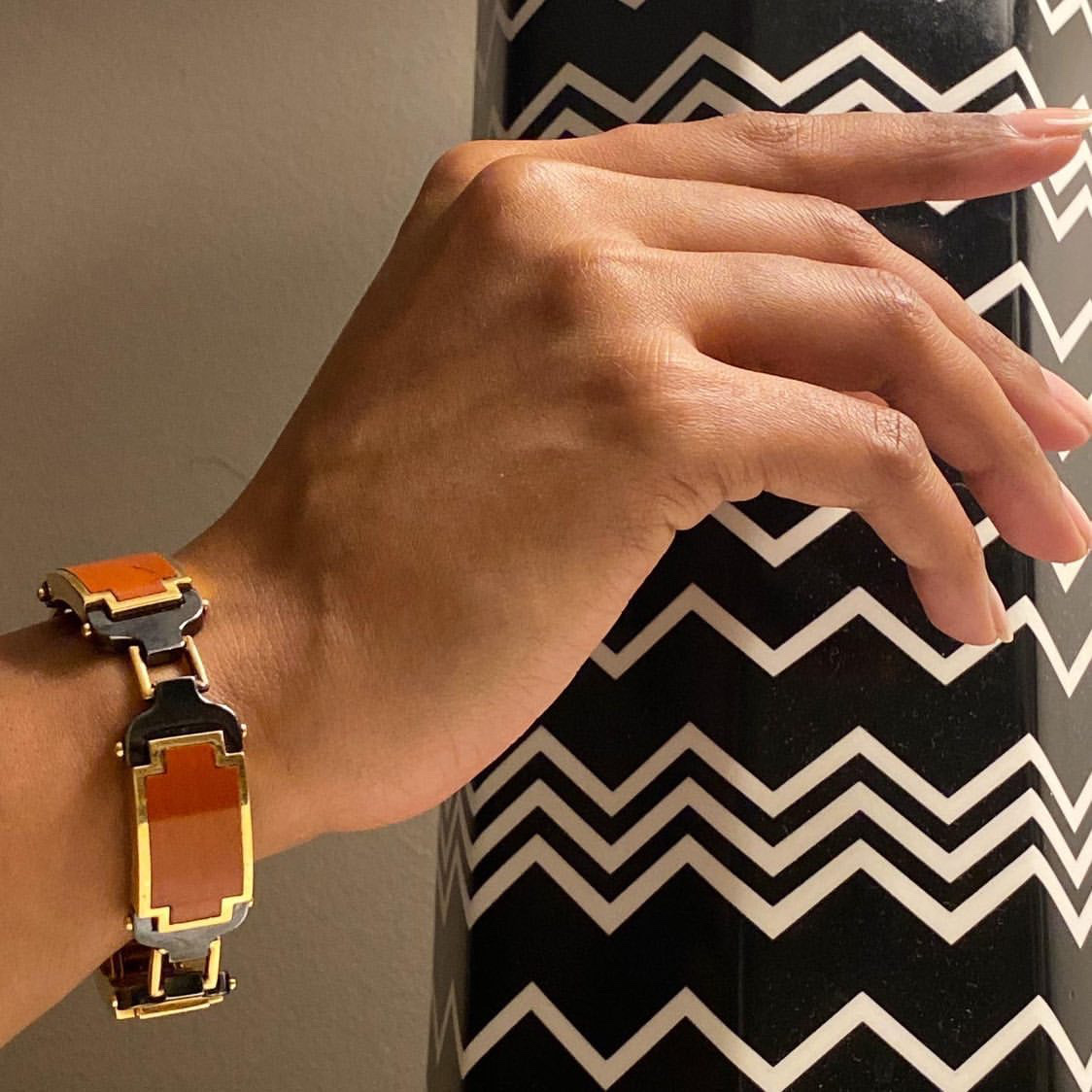

All it takes is a single glance at the carefully curated Particulieres Instagram feed to know that jewelry dealer Shelly Branch has an eye for exquisite design. By pairing vintage jewels with mid-century objets d’art, Branch maintains a fine balance between the solemn and the extravagant. Her inventory consists of signature names in the jewelry world—Aldo Cipullo, Burle Marx, and Elsa Peretti, among others—but also boasts unsigned pieces of notable beauty. Serving as a jewelry advisor to her clients, Branch approaches her business with the same vigor and intellectual curiosity that fueled her during her time as a journalist. Her natural inclination to delve deeply into her subjects has made Particulieres part fashion magazine, part history, and all fascinating.
Read on to learn how a career journalist forged her own path into the jewelry industry, how Particulieres reflects Branch’s personal aesthetic, and how to find the perfect vintage piece for your collection.

You started Particulieres after spending seventeen years as a journalist and editor at the Wall Street Journal. Why did you decide to leave journalism?
I actually didn’t decide to leave journalism. I had been at the paper for quite a while. I was a page one editor for almost thirteen years. Working at the paper, within News Corp—owned by Murdoch—had become increasingly difficult. The paper I joined was a very different paper than the one I left. In the aftermath of the Trump election, I found that I was unable to do my job as I saw fit. And I was not alone in that view. A lot of my colleagues were leaving, for various reasons. I decided that I had been there for long enough. I’d had a good run, and it was high time to do something else. I really did intend to join another news organization. But I also had a book project that I was working on, so I wasn’t in a particular hurry to land a new job. Then jewelry kind of happened.
How did you transition into fine jewelry?
It wasn’t even a transition. It was a series of coincidences and accidents. I had made several trips abroad, including to France. On one trip to Paris, I decided I really needed a proper gold bracelet—which I never found, by the way. I have a lot of interest in design and objects and art and furniture, so I was just having a merry old time prancing around Paris, inhaling all of these beautiful things. I bought some jewelry pieces, nothing terribly expensive. I came home and started to get questions about where I had procured this jewelry. One shrewd lady with a shop in Greenwich Village summarily demanded that I bring pieces to her shop to sell, which I thought was a great compliment. It also sounded completely ridiculous to me, as I did not have any inventory to sell. She insisted, so I went out and bought costume inventory. I started out selling high-end costume jewelry in her shop in the Village. I knew what my inclinations were when it came to collecting, so I just naturally gravitated up the scale into fine jewelry. Then I found myself gravitating toward a specific era, and eventually costume jewelry dropped out of the equation altogether.
For the fun of it, I threw some pieces up on Instagram. I started out thinking that it might be interesting to show jewelry in the context of other things that I love. And those were various objects that I had collected: mid-century objects, for the most part, including Italian, Swedish, and Danish ceramics, and glass. I felt these pieces complemented one another. My friends in the jewelry industry tease me, “How do you always have the exact prop?” I have a lot of crap in my house. I’ve been collecting objects forever. I have the sculpture, the vase, the ceramic box that will complement just about any piece of jewelry you can toss my way.

I’ve noticed most of your offerings are pieces from the 1960s, ‘70s, and ‘80s. What is it about that time frame that you gravitate toward?
I find that pieces from those periods are accessible. And what I mean by that is, they are pieces you can comfortably wear and visually understand without them being redundant, and that last part is very important to me. I want to offer my clients pieces they won’t necessarily find somewhere else. You’re never going to find a Cartier Love bracelet, no offense to that iconic design, on my page. A piece of jewelry that you invest in should be something you can wear every day. My focus is on special pieces that you can wear without being afraid of looking too dressed up, and without fear of looking dated. It’s ironic to say that, of course, because these pieces are not new. But I feel a lot of jewelry can easily look dated, even if it’s new. I try to keep in mind when I’m buying pieces: what will look fresh? What will look interesting? Oddly enough, I find that pieces from the ‘70s, sometimes the ‘60s, really do look refreshingly new, refreshingly different. Maybe it’s just because they are pieces that have been set aside for a while, and they’re a finding new audience. Maybe that’s why they feel fresh to me. But most importantly, they’re wearable design objects.
I have to be careful in what I buy, and I do own all of my inventory. I want to stress that. Not all jewelry dealers own their own inventory, but I own everything that you see on my page. It’s important for me to own my inventory, because it means that when I am acquiring, I am making a commitment to it. I have to believe in it, because I paid for it. That’s another reason why I hope my page has a cohesive feel. I’m not just reaching out and grabbing things on memo from people and seeing what sticks to the wall. I’m actually going out and sourcing pieces that are within my aesthetic window and that I believe my customer base will like. I have to love it. My rule is: it has to hurt to sell something. I have to feel sad when it leaves me. Otherwise, I feel like I’ve not done my job.
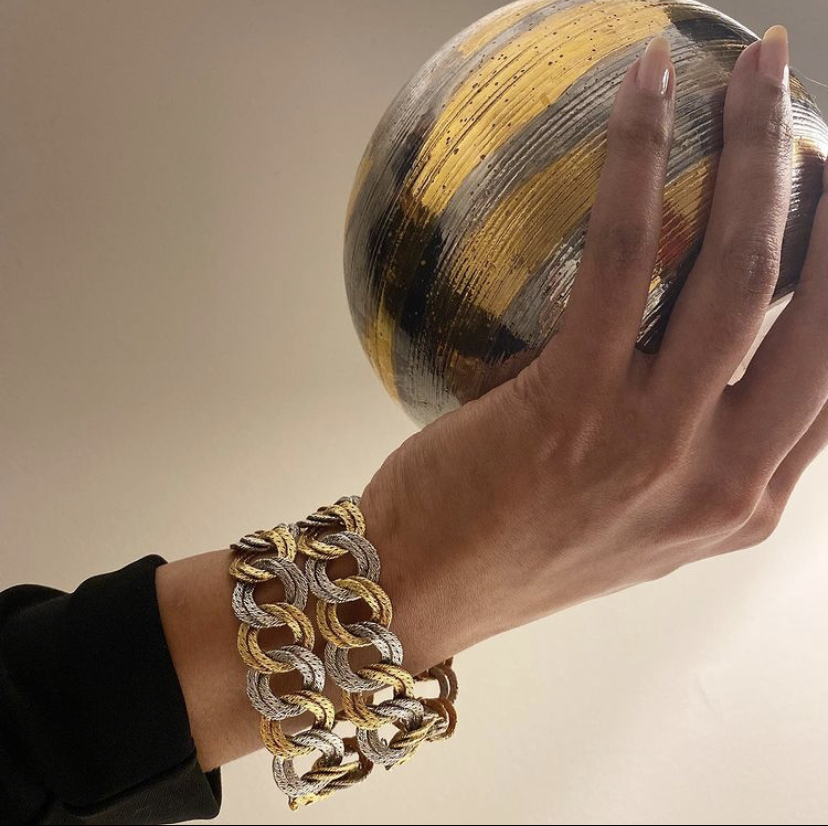
Is there anything that you initially acquired to sell, but loved so much that you ended up keeping?
I’ll give you a recent example of something I’d like to keep, which is this large, geometric Aldo Cipullo for Cartier bracelet that I have. It’s such a wonderful example of Aldo Cipullo, who also designed the iconic Love bracelet we were just talking about.
Have you experienced any changes in your business since the pandemic began?
Of course. Everyone freaked out when COVID hit, and it was a really difficult period for me because I had just lost my father to Alzheimer’s. To go from the unexpected immediacy of grief, to lockdown was very difficult. I was less than enthused about conducting business. But at least I already had a customer base on Instagram. A lot of dealers weren’t in that position. They had treated Instagram as a grace note, at best. For me, Instagram is the thing. I don’t have a website. I don’t sell on 1st Dibs, or any other platform. What I do is pretty unusual, especially because I’m selling things to people all over the world. It was difficult, emotionally, to drum up business, and certainly acquiring anything was hard. Shipping was impossible. Everything was just more difficult. But I kind of picked myself up and did it. I found a jeweler who was still working at his bench who would walk to my house and pick things up to size. I got on my bike and rode to private clients’ homes. I’ve always been a determined person, so I guess that just kicked in. I found people were very anxious to have something that brightened their day. Whether it meant daydreaming on Instagram, or making a purchase, my sales were actually quite good during even the worst days of COVID and the lockdown.
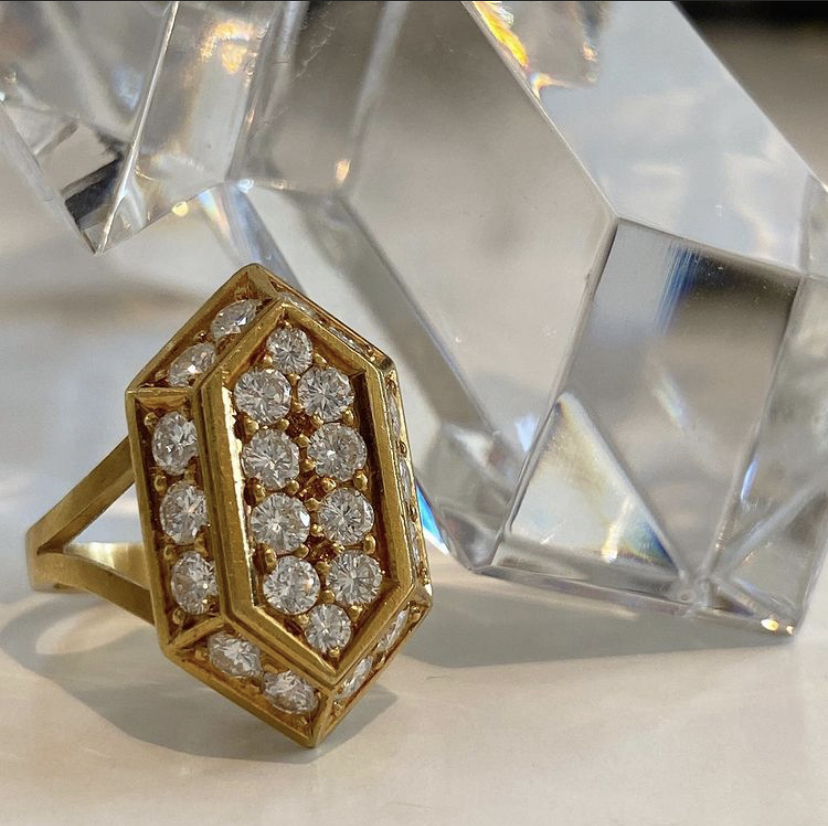
Do you ever plan to expand from selling primarily through Instagram, or are you going to remain on Instagram for now?
The old-fashioned side of me says, “If it’s not broke, don’t fix it.” But the practical side of me also realizes I have built up a certain brand equity that I should be exploiting further. At the moment, I’m trying to figure out just how to do that. Whether you’re going to see a fully functioning website where items are for sale? The answer is probably no. I think that, in this day and age, the buying habits of the public have radically shifted, and COVID probably sped that up. A website is an entity floating in space that you have to think about visiting, whereas Instagram is something that people pick up like their newspaper every day. I’m automatically in the view of ten thousand people. If I ever did have a website, it would serve more as a banner for my brand, and less as a selling platform.

You said earlier that you have to love everything that you sell. So, is your personal jewelry collection also primarily these kinds of statement pieces?
I want to make a distinction. I don’t think everything I sell is a statement piece. Even the Aldo Cipullo bracelet that I just mentioned—admittedly, that’s not something I’m going to wear every day—but it’s something that I could wear often. It’s not something I envision its owner keeping in a safe. It’s very wearable. It’s very comfortable. It looks great with anything. You could walk out of your house in an outfit with no other piece of jewelry on, just that bracelet, and everyone is going to notice it. I guess, to that extent, it is a statement piece. But it’s also practical because it’s so wearable. I sell everyday jewelry that you don’t have to bother taking off. I think a lot of my bracelets and rings fall into that category. Part of my personal collection is a smooth-link Georges L’Enfant bracelet that I wear with my watch. It’s from the 1940s, and I just don’t take it off. I sleep in it, I shower in it. It’s my everyday jewel.
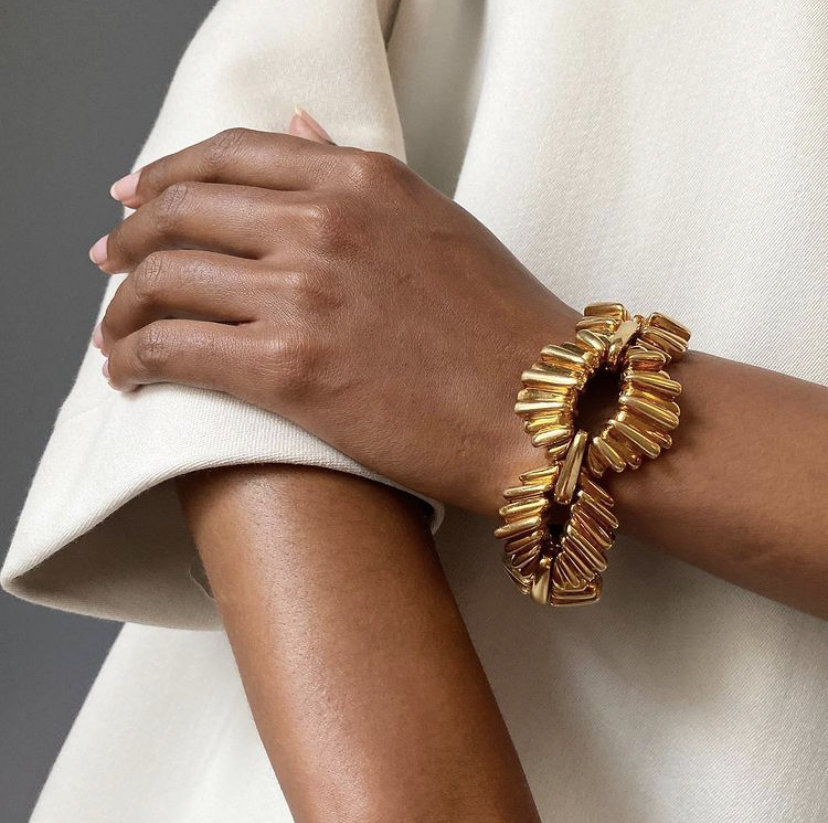
What have your experiences been as a Black dealer in the fine jewelry industry?
I’m unaware of another Black person who is selling vintage jewelry at this level, and that actually saddens me. But it’s not surprising to me, either, because the barriers to entry in this business are quite high, and not just financially. When I stumbled into this, of course, being a journalist and being someone who doesn’t take no for an answer readily, it didn’t occur to me that there might be barriers that were unpleasant and necessary to scale in order to conduct just basic business. The first thing I learned is that it is very much a male-dominated business. Most jewelry dealers come from a place of having had experience in the industry. A lot of this is generational. I certainly didn’t have that benefit. Then there are various factions in the business that you have to understand and navigate. There are a lot of cliques that you have to penetrate, or else you will get nowhere. I’m not the kind of person who would be invited or welcomed into those cliques, and that continues to this day. As an example, one popular means of acquiring jewelry involves online chats. But, to my great dismay, I have not been asked to participate in these chats. I’ve been excluded from them until very recently, when I was invited to join one by a lovely French dealer.
And that’s just one example of the business being very clubby and cliquey and sexist and obviously, to some degree, racist. I have had people in the [Diamond] District say, “I don’t believe you’re going to buy anything. I don’t want you in my store. Get out.” Racism takes so many forms. Sometimes it’s subtle, sometimes, it’s not so subtle. When I would go to jewelry shows, people would say “Well, we don’t know you. We can’t take your check.” Which is understandable. But I found that I would have to go through two or three times the hurdles for someone to take the check. And even then, they wouldn’t want to release the merchandise until the check had cleared, which is unheard of. So it’s been various degrees of that kind of thing.

Since the Black Lives Matter movement became prominent earlier this year, some jewelry industry insiders have pledged their support BIPOC jewelers and jewelry designers. Have you noticed any increased support recently?
It’s hard for me to say, because there is a line between being a dealer and a maker. So, no, I am not aware of anyone saying, “I’m going to buy a Cartier bracelet from her because she’s Black.” And I wouldn’t expect that. I would expect that you want to buy something from me because I have a piece you love.
That said, during the protests, there were some wonderful people who felt the need to spotlight Black businesses—people like Marla Aaron, and the Adventurine, who wrote really nice pieces about me. That was certainly helpful. It drove traffic to my page, and I did gain new followers who ended up being clients.
What changes do you want to see in the jewelry industry? What do you think would be helpful for you?
I don’t mean to be cynical, but I’ve seen and experienced racism on so many levels in my life. For me to think about racism as it pertains to the jewelry world is just a little bit tough. It seems like there are so many areas in society that we have to fix before we can even begin to talk about what’s happening in the jewelry industry. On Election Day, to see so much red on the map was disheartening as a Black person. For all the talk we hear about leveling the playing field, it’s just complete bullshit until you see actual deeds done, and actual progress. And I feel any progress that might have been made has been rolled back several decades by what has gone on in the political and social environment of the past five, six years. It’s very hard for me to filter that down to what can be done in the jewelry world. At this point, I’m focusing my attention on what’s wrong and how I can be part of the solution on the macro level.
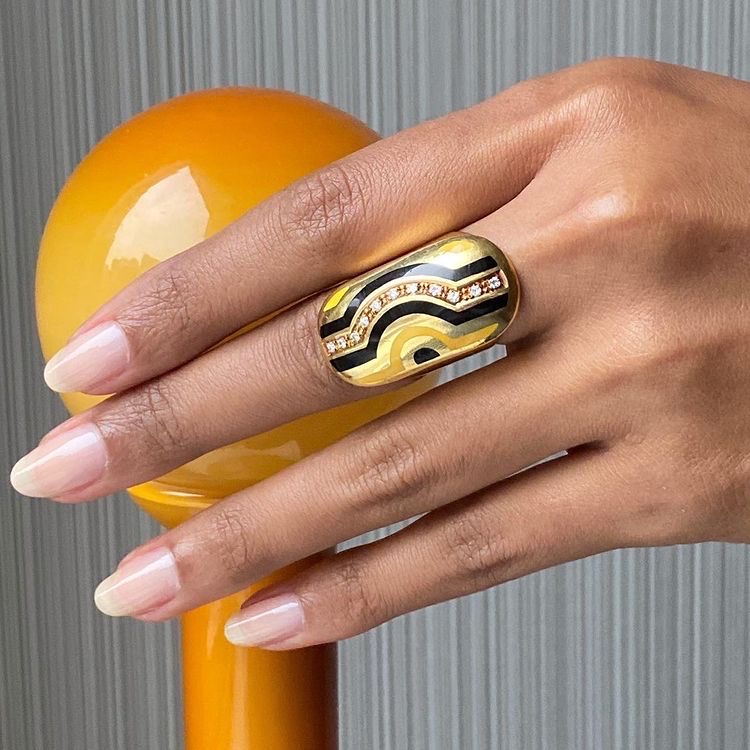
Do you have any advice for Gem Gossip readers about finding the perfect vintage or antique piece?
I tell people they must buy what they love, and they must only buy what they can comfortably afford. Don’t buy something because it’s a name you think will increase in value, because that’s folly. Buy something that you will actually wear and derive pleasure from. I think we all need more beauty in our lives, even if it’s a small thing like a ring, or a bracelet, that’s going to bring some measure of joy into our daily existence. But don’t buy jewelry with an expectation that it’s going to be more than what it is—a piece of jewelry.
Is there anything you have not shared that you want people to know about you?
I do everything myself. I buy everything. I source all of my own pieces. I don’t have any kind of financial backing. This is my self-funded business. I take all of the photographs that you see. I write all of the copy. I’m a one-woman show.
The other thing that I should say is that there are many pieces of jewelry I sell that you will never see on my page. Quite a bit of my job is serving as an advisor to my clients. I have existing clients who will say, “Shelly, I’m looking for a specific thing.” I had a client who wanted an Aldo Cipullo hamsa hand. I went and I found it. For good clients, I will fulfill a specific request such as that. Then I have other clients who trust my eye, but may be collecting an entirely different period from that in which I specialize. I will source pieces for them as well. That’s become a bigger piece of my business, sourcing jewelry for existing clients within my era, but also for clients whose taste is different. My focus with Particulieres will remain the same. I don’t anticipate that all of a sudden, I will start selling Edwardian jewelry. That’s not going to happen. But I have continued to learn about different eras and periods in order to better serve my clientele.

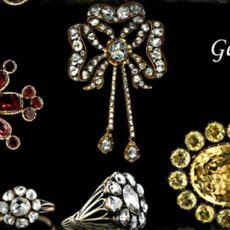
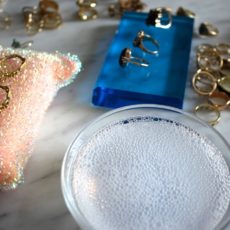
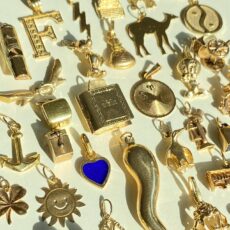
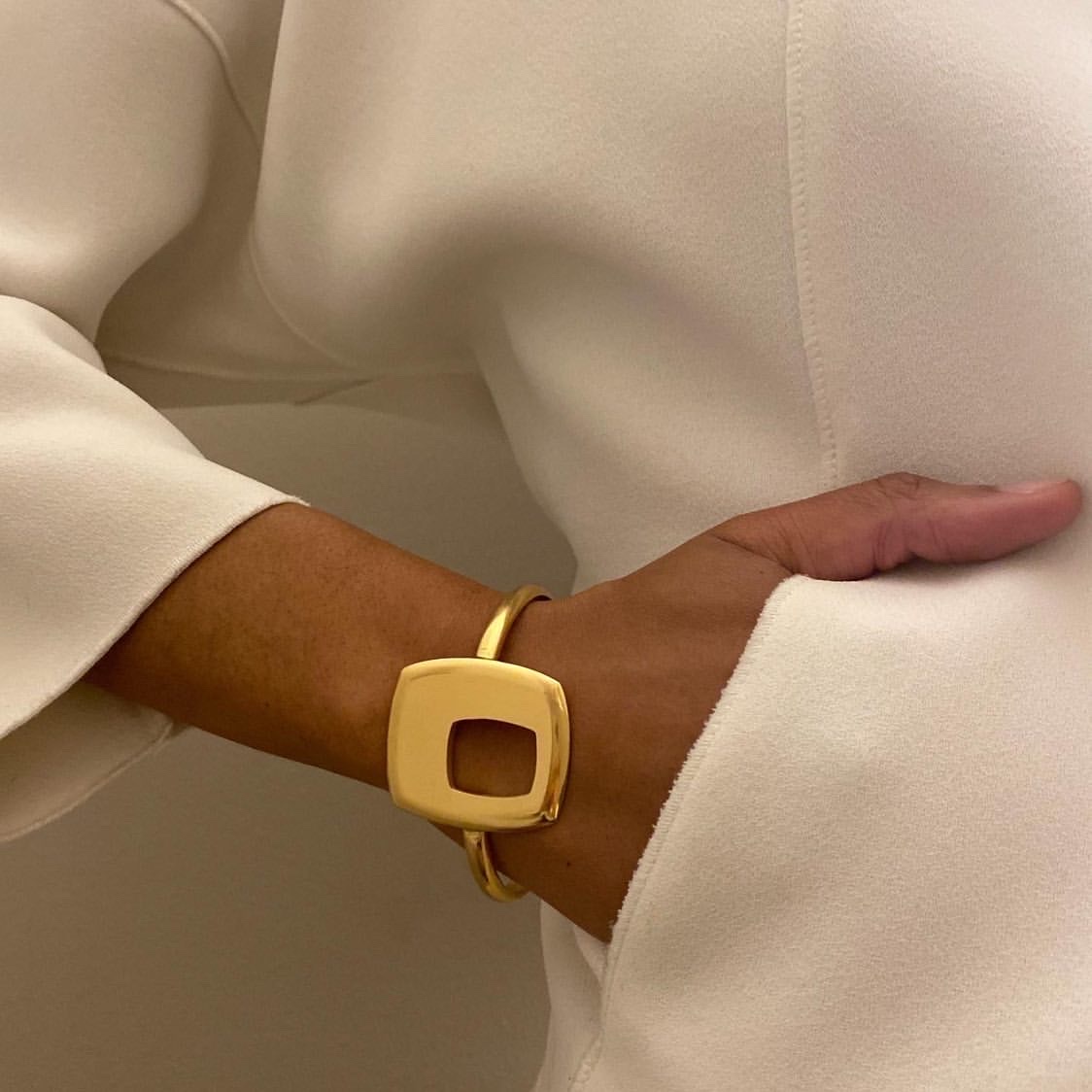
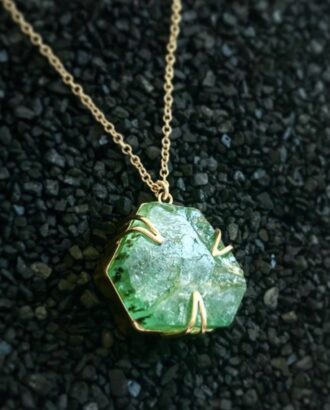
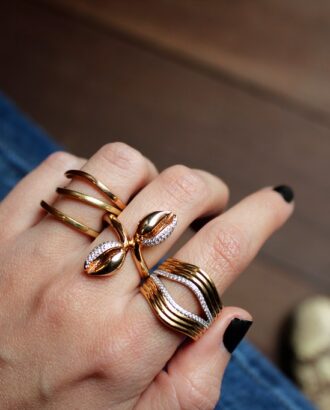
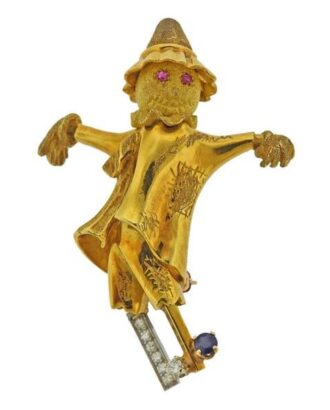
Amy Roseveare December 7, 2020 at 5:52 pm:
Fabulous article! I’m a huge fan of Particulieres. Shelly has the most exquisite taste, and I look forward to one day owning a piece she has sourced.
Nia Tahani Wilkes December 13, 2020 at 1:27 pm:
This hit all the high notes! Thank you Keisha and Shelly. I have a few items on the wishlist now.
Benjamin August 16, 2021 at 5:48 am:
Very Very nice